Thousands years old & a Colourful Theyyam Tradition - An extremely popular ritual of Dance Worship in God's own country, Kerala state of Incredible India
 |
| A Theyyam blessing the priests. These performers are considered as God themselves once they don the Theyyam costume |
A lot of people confuse Theyyams with Kathakali, and there are good reasons for that. There is considerable similarity in the makeup, getup and some dance moves. But the fact is that there are fundamental differences between both the art forms, in terms of both purpose and artists.
While Kathakali has evolved as an art form and is often used to depict epics like Ramayan and Mahabharat, Theyyam is mostly used to propagate and sustain deity worship. Most of the performers in Kathakali are Brahmins, whereas most people who perform Theyyams belong to the castes that society terms as "low".
 |
| Artist in the process of becoming Pulimaran |
It was Theyyams we were excited about when we were in Kerala in December. We happened to be at Kannur at the right time. And if you are there close to Theyyam festival, make sure you pay them a visit. It will be worth it.
Related Blogpost - Main places to visit and things to do in Kerala, India
After 4 lovely days in Wayanad, we hit our beachside homestay in Kannur. The day started at 6am for us and we headed towards the beach, which was just 50 meters from our homestay in Kunnur. It was very peaceful at that time with some fishermen boats at the other end ready for the journey. There were few folks of birds playing with waves and waiting for their food to hit the beach. They were continuously looking for baby crabs and always trying to avoid the water to touch their feet.
 |
| Priests chanting stories of Theyyams |
I remember we had some trouble getting to the village where Theyyam was being performed. We had to change cabs and when we reached there, the prayers hadn't really started. We happened to chance upon some artists getting their makeup done for their performances.
Most of the Theyyams were ready by the time we reached there, but managed to find few who were still preparing. One temple priest helped in locating these folks. It was quite friendly environment at the temple. Many times, I am conservative in taking out my camera at temples or especially for such activities. Temple around a tourist place can be a bigger issue, but this was completely opposite. There were no restrictions on walking around the temple compound with your camera. I managed to catch the Theyyams from many angles and there were other people too with cameras doing the same. But even the photographers were very disciplined and were taking care not to come in the way of the festivities.
 |
| Pulimaran performing in the temple complex |
Two priests, clad in a white dhoti with a red border, were singing in the courtyard of the shrine. Their loud voices easily dominated the beats of chenda, the traditional percussion instruments they were playing, and the cacophony of all other voices around the shrine. To us outsiders who didn't understand the language, the tone sounded plaintive. Only later did I find out that these priests are also considered Theyyams and they were telling the story of the Theyyam who was about to perform next.
While Vijay clicked pictures, I went and sat on the benches around the temple's boundary. By this time, the chanting had started. The intonations of the two priests who were chanting sounded mournful and full of foreboding to us, but a young girl sitting next to me explained that the priests were singing about the Theyyam who was about to perform next.
If you think that the Theyyams came in soon after the chanting began, you cannot be more wrong. They made us wait, those Theyyams. They made us wait for what seemed like hours. But when they did come in, it was nothing short of magical. Their feet danced to the percussions and they looked magnificient with their grand headdresses and the otherworldly makeup.
|
The first Theyyam to perform was pulimaran, a reincarnation of Vishnu. This Theyyam had a large but manageable headdress, but looked fierce with his kohl-lined eyes that were like marbles in the sockets. Pulimaran danced and performed prayers at the main temple and then went around temple complex blessing people and distributing Prasadam.
Every Theyyam has a different dress and varied methods of worships. Every Theyyam is accompanied by a priest who guides them through the worship areas and route they have to take inside temple compound. It was very interesting to see a detailed oriented approach in all these worships and Theyyam movements. After completion of the workshop, every Theyyam used to take a round and giving yellow rice powder to everyone. Folks were supposed to make tilak of this powder & put some of it in the mouth. The artists, once they wear the dress of a Theyyam, are considered Gods themselves. Some of these dresses were really uncomfortable and the artists had to wear them for around 2 hours each. Only unwavering faith and devotion can make them accomplish such a daunting task every year. Our hearts were full of respect for the artists.
 |
| Pulimaran distributing Prasadam |
The next Theyyam made a grand entrance. He wore a much bigger headgear than Pulimaran. It was while watching this Theyyam that the true hardship of being a Theyyam really struck me. With the heavy headgear and elaborate costume, this Theyyam performed for a long time, never once showing any sign of fatigue. The realization about the kind of hardwork that goes into performing a Theyyam was overwhelming. Full of respect for the professionals behind the customs, I watched rest of the Theyyams in awe.
Another memory I still carry of that day is oranges. We were there almost the entire day and were very hungry. Only a couple of hawkers were in sight and we bought a dozen oranges and ate them through the day. They were tiny oranges, but were incredibly sweet. Around the evening we discovered that the temple had organized community meals for everyone. We wanted to taste the meal, but the queue was huge. Some organizers however spotted us in the queue and gave us a back door entry. They probably noticed that we were ready to pass out because of humidity and hunger. I have no particular memories of the meal itself though.
 |
| Anklets worn by Theyyams - these ornaments made a metallic sound when Theyyams danced to the percussion instruments. |
We headed back after that looking forward to another evening on the beach. While we were in the village, it felt like another world altogether and though we liked it there, we wanted to be back in the world we recognized. Today when I think of it, while the Theyyam experience was memorable, I probably won't go out of my way to watch it again because of the sheer torture of sitting in the humid heat without any shelter. But everyone should experience it once at least.
Above photograph shows the entry gate of a local temple where Theyyam is celebrated every year. Most of the decoration around the temple is done with natural things like bunch of coconuts, Areca nuts, leaves, flowers etc.
The temples, or kavus, where these Theyyams perform usually do not have idols. The only worship that happens here is when Theyyams come and perform and at that time it is believed that the gods themselves have come to the courtyard and are performing a worship there. This is the only time that one can seek blessings in this temple. The worship ceases as soon as the Theyyams leave and resume when they return.
While Theyyams were getting ready, priests had their own duties to prepare worship material. Apart from coconuts, many other natural things are collected and put together for final worship rituals. Above photograph shows a priest taking out the Areca nuts from their shells. The photograph above also shows fresh Areca nuts.
After finishing this primary ritualistic part of the invocation, the dancer returns to the green room. Again after a short interval he appears with proper make-up and costumes. There are different patterns of face-painting. Some of these patterns are called vairadelam, kattaram, kozhipuspam, kottumpurikam, and prakkezhuthu. Mostly primary and secondary colours are applied with contrast for face painting. It helps in effecting certain stylization in the dances.
Theyyams are also classified in different categories and mainly influenced by religious beliefs. Theyyams are not only about dance and music. Lot of them are very good actors and mime artists. Their facial expressions are very special and the way those expressions change is hard to explain in words or express through photographs. While typing this, I realised that I haven't shot even a single video of Theyyams.
Once the Theyyams had all performed, they opened the food pandal. It is similar to Punjabi langar except that you sit on tables and the food is served on Banana leaves. The sweet is served first, followed by rice, sambar, chutney achar and various other vegetarian curries. The staff managing the pandal was very polite and accommodating. We found this very helpful especially since we couldn’t understand their local language and customs. Overall watching Theyyam and having food with everyone was a very heartwarming experience.
If you liked this post and found it helpful, I would request you to follow these things when traveling -
1. Manage your waste well and don’t litter Use dustbins.
2. Tell us if you went to a place and found it hard to locate a dustbin.
3. Avoid bottle waters in hills. Usually you get clean water in hills and water bottles create lot of mess in our ecosystem.
4. Say big no to plastic and avoid those unhealthy snacks packed in plastic bags. Rather buy fruits.
5. Don't play loud blaring music in forests of jungle camps. You are a guest in that ecosystem and disturbing the locals (humans and animals) is not polite.


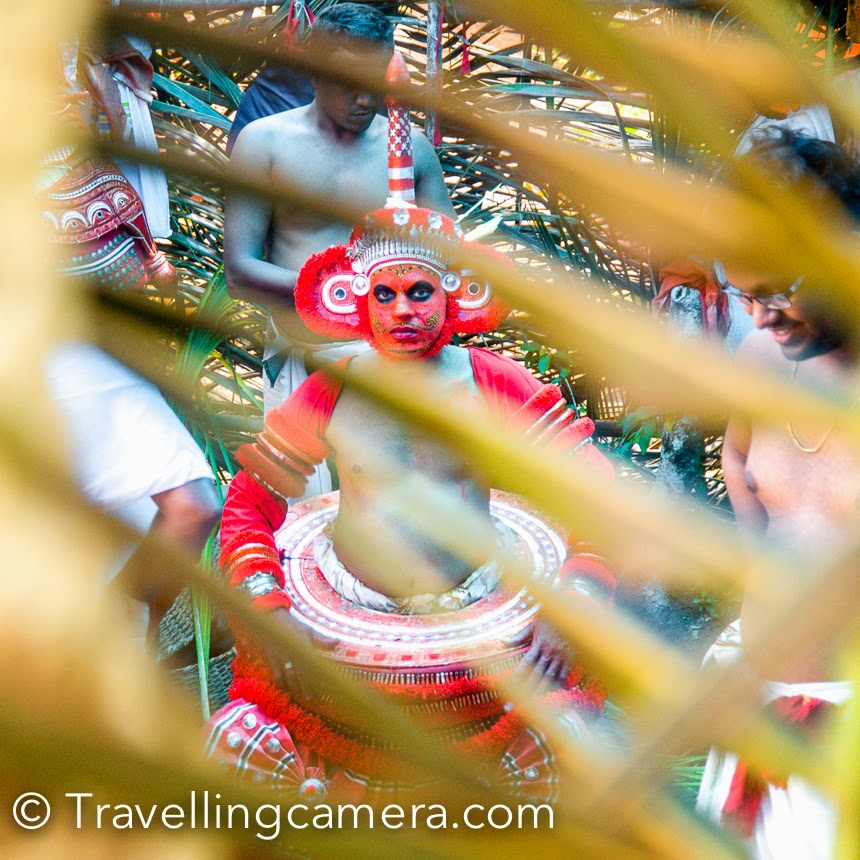




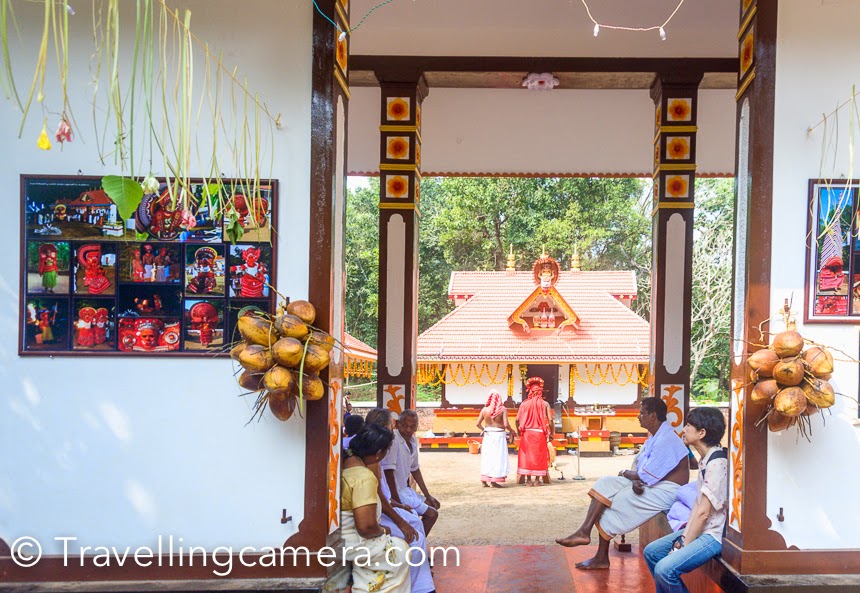



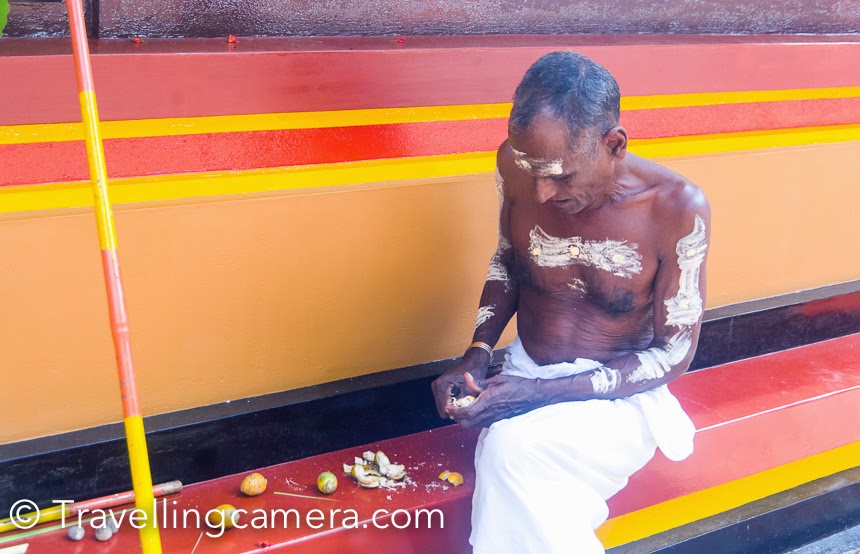

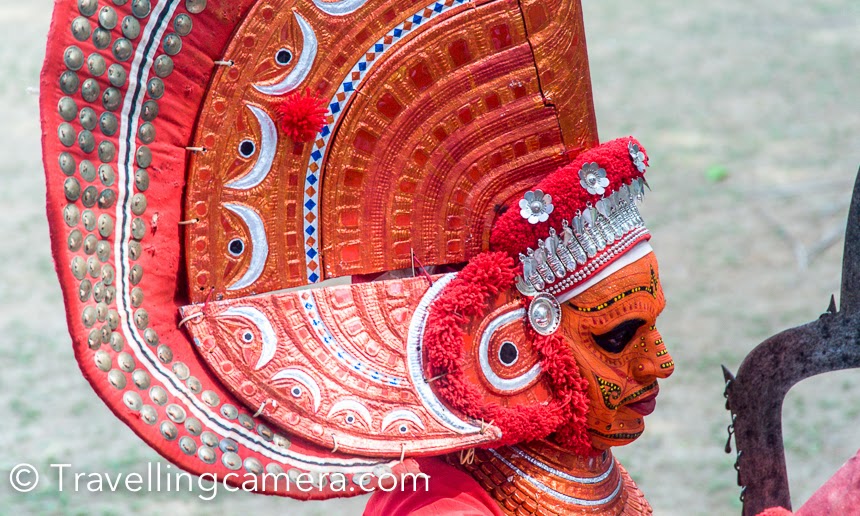
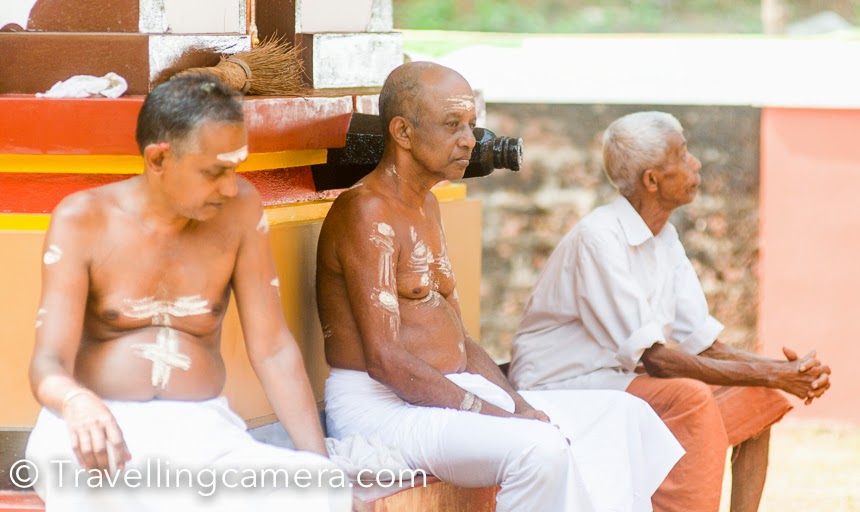

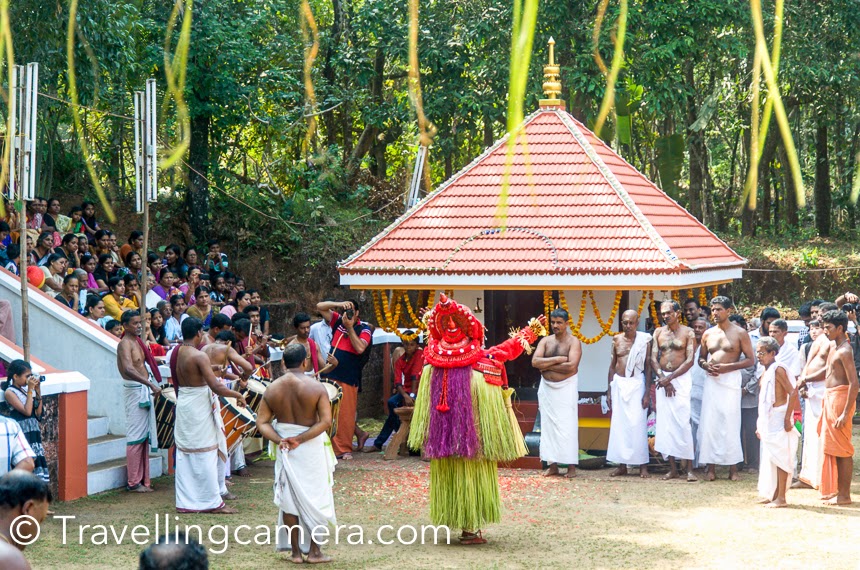

.jpg)
Comments